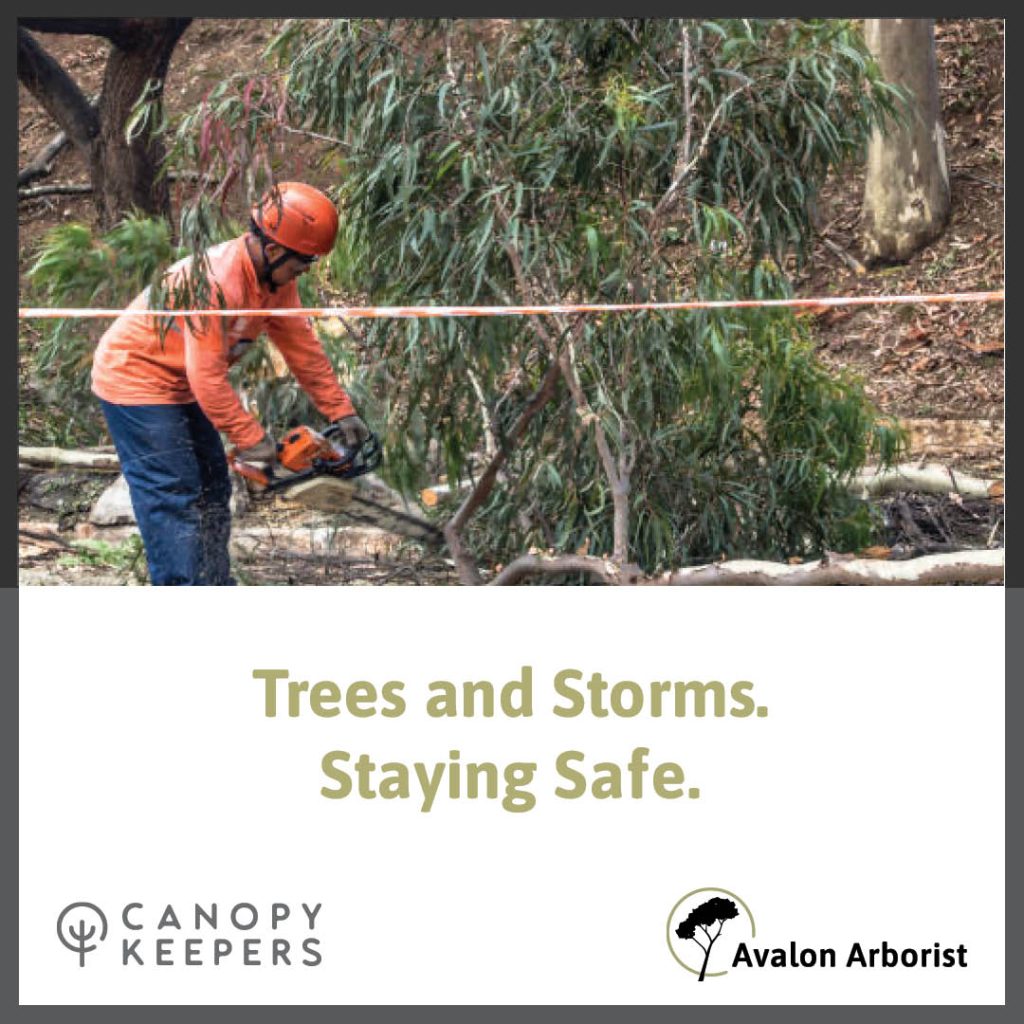The combination of excessive rainfall and high winds can increase the potential for tree failures. These kinds of complete or partial tree failures are colloquially referred to as ‘storm damage.’
Failures may include complete whole tree failure (mechanical root-plate failure known as ‘windthrow’) or complete failure of stems or branches. Partial failures of the root-plate, stem or branches are also common and can pose an unacceptable level of risk as they may, without warning, completely fail at a later date.
As the Northern Beaches have recently experienced excessive rainfall with high winds, now seems like a good time to provide some information which will assist you to assess your own trees for storm damage. This information is provided as a guide only and is not intended to replace having your trees assessed by a level 5 consulting arborist who is also trained in thorough tree risk assessment.
The best way to inspect your trees for storm damage is to start at the stem base and work your way up. First inspect the soil around the base of the tree. Characteristics such as exposed roots, soil cracking, mounds of raised soil or a noticeable change in the lean of a tree are all indicators of partial root-plate failure, which is called windthrow.
Next, inspect the tree stems, looking for cracks, splits or tears. If the tree has more than one stem, look for a split at the point where the two stems join.
Finally, inspect the tree canopy. Things to look for include branches which have been snapped out and are hanging, branches with longitudinal splits or tears and splits/tears at the branch to stem attachments or splits/tears at the junction where branches connect with each other. If your trees exhibit any of these characteristics then you should contact a level 5 arborist as soon as possible, so that the level of risk can be determined and a plan of action initiated.
In extreme circumstances you may be allowed to remove trees which pose an unacceptable level of risk without a Council permit. However, an arborist report which concludes that the tree poses an unacceptable level of risk must always be commissioned first. A full-blown report isn’t required, but it must contain photos and a justification for tree removal. You can check the Council guidelines HERE. If storm damage of the tree scaffold (canopy) is identified (complete or partial) it is strongly recommended that remedial (restorative) pruning be carried out by a minimum AQF3 level arborist in accordance with the Australian Standard AS4373-2007. This will assist in minimising any potential tree health decline or other deterioration issues.



